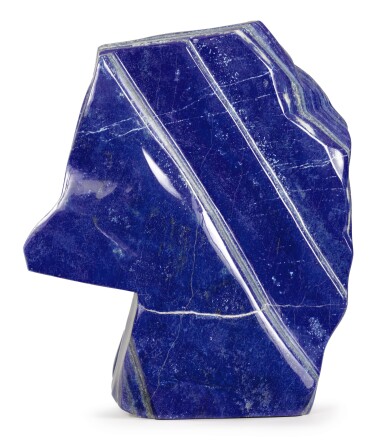
A FINE SPECIMEN OF LAPIS LAZULI
Auction Closed
December 17, 08:56 PM GMT
Estimate
6,000 - 7,000 USD
Lot Details
Description
A FINE SPECIMEN OF LAPIS LAZULI
AFGHANISTAN
A beautifully sculptural piece, the freeform perfectly polished on all sides. (43 x 38 x 7 cm). Evocative of a cubist portrait, one can distinguish a prominent nose, a halo of eyes, and a mouth drawn by a fine white vein.
The main deposit of Lapis Lazuli (from the Latin lapis for "stone", and the Arabic azul for "deep blue") is found in the Sar-e-Sang mine in the Kokcha River Valley of Afghanistan.
The popularity of this semi-precious stone has persisted through the centuries; in the time of the ancient Sumerian dynasties (2900-2340 BCE), lapis lazuli was extremely popular, as it was believed to have the ability to ward off evil. More than 50 pounds of raw lapis lazuli were found in the Syrian palace of Ebla, and hundreds of objects fashioned from this fabled stone (such as jewelry, inlays, cylinder seals, and amulets) were found in the tombs of the royal cemetery of Ur. What is perhaps one of the most beautiful specimens is housed in the Musée du Louvre in Paris; a cup in the form of a boat, having belonged to both Louis XIV and Marie Antoinette.
